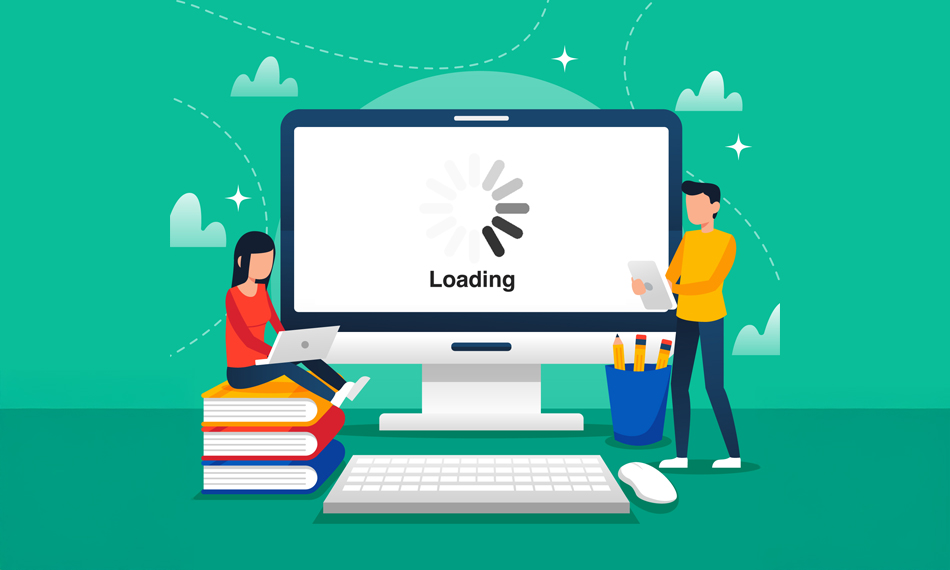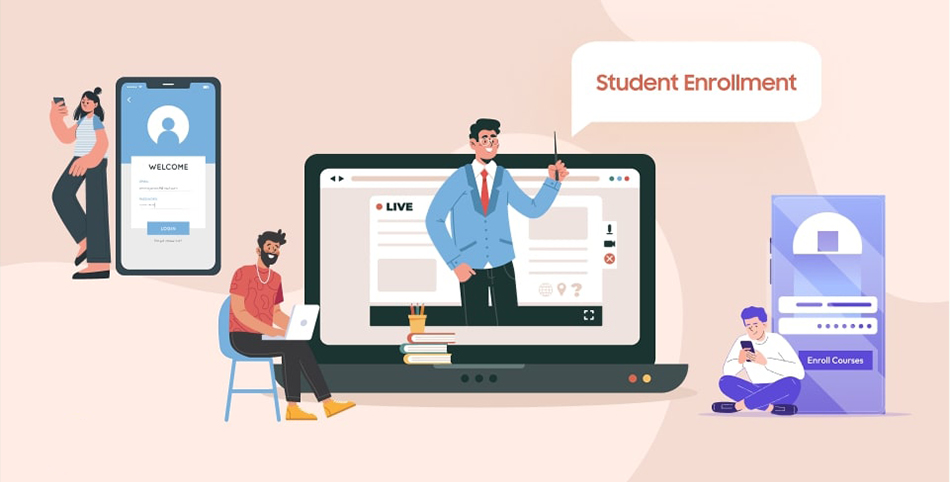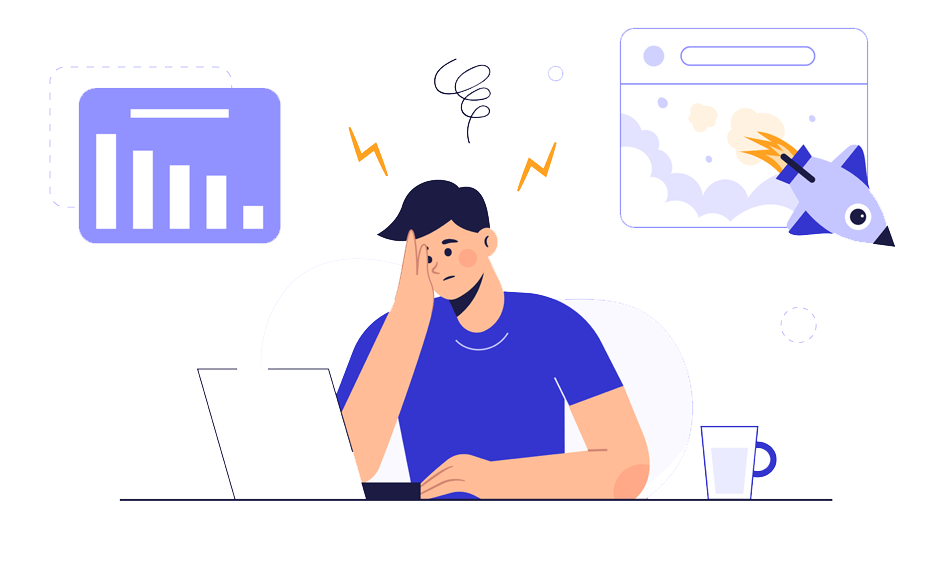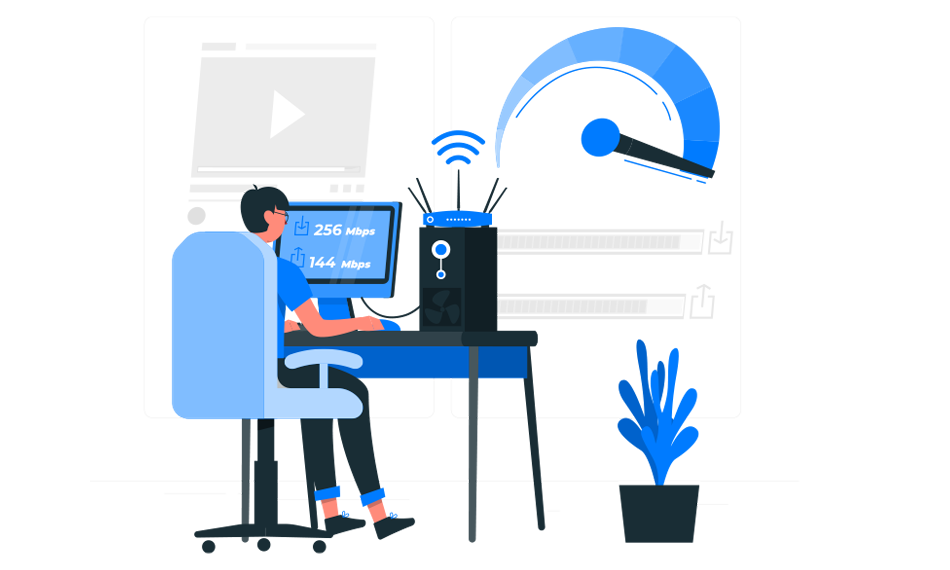TL;DR: A slow website hurts enrollment rates by driving students away before they even think to apply. Today’s digital-first students expect instant access, and delays can damage trust, lower engagement, and reduce applications. By improving website speed for education websites through image optimization, caching, mobile responsiveness, and reliable hosting, universities can boost student enrollment rates and improve overall institutional success.
A slow website hurts enrollment rates because impatient students won’t wait while your pages load. When your institution’s site lags, you could lose potential opportunities before the student even sees your programs.
The higher-education landscape is no longer an exception in this digital competition. The difference between a prospective student hitting “Apply” and bouncing away can be mere seconds.
Let’s learn the secrets to maximizing enrollment rates through website speed optimization for educational sites.
Why Speed Matters for Education Websites

Website speed directly affects students’ enrollment rates, engagement, and search engine rankings of an educational website. These are some potential reasons highlighting the importance of website speed for education websites:
The Mobile-First Student Mindset
Students and younger applicants expect mobile-friendly and fast-loading experiences. Most of them begin their search for programs on smartphones or tablets. A site that doesn’t perform well on mobile or feels sluggish creates a barrier before the user even navigates deeper.
Short Attention Spans and Rising Digital Expectations
Research shows that over 50% of users expect pages to load in around 2–3 seconds, and slow load times increase abandonment. These expectations apply to students as much as e-commerce customers. For education websites, delays mean frustrated students with limited patience will leave your site and move to another institute.
A Slow Website Affects First Impressions and Application Intent
Your institution’s website is often the first point of contact, shaping a potential student’s first impression of your school. When load times are high, the experience feels unpolished, which affects the user’s intent to enrol.
Improving Institutional Credibility Through Speed
Along with low enrollments, slow website speed also signals unprofessionalism to visitors, making them abandon the site early without browsing for programs further. A slow website hurts enrollment rates, reputation, and reach.
How a Slow Website Hurts Student Enrollment

A slow website hurts enrollment rates by increasing bounce rates and negatively affecting conversions and user experience.
Increased Bounce Rates, Drop-Offs, and Broken Funnels
Slow load times directly impact bounce rates and drop-offs through your conversion funnel. For example, Cloudflare stated that when load time goes from 2.4s to 4.2s, conversion rates drop significantly. For universities, this means lost application opportunities, incomplete forms, and lost leads.
Lost Conversions Due to Slow Website Experiences
Every second delay eats into your ability to convert visitors into applicants. In a case study, speeding up pages in a conversion funnel doubled completed transactions. A slow website hurts enrollment rates and drives students away fast.
Lower Search Visibility of Education Websites
Page speed is now a factor in search engine ranking, especially with mobile-first indexing and Core Web Vitals. If your site is slow, you risk lower visibility, less traffic, and fewer prospective students finding you, reducing your conversion pool.
Slow-Loading Time Hurts Student Perception for Education Websites
Beyond metrics, slow sites create psychological friction. According to Google, slow load times trigger user stress responses and reduced satisfaction. When students perceive your site as slow, they may think of your institution as less dynamic. That perception harms enrollment intent.
How to Speed Up Education Websites: Practical Steps for Universities

As we have explored how a slow website hurts enrollment rates, now let’s head toward its solution. Here are some strategies to improve website speed and increase student applications:
1. Optimizing Images and Videos for Faster Load Times
Large images and uncompressed media slow down page load significantly. Use tools like Image Optimizer Pro to compress and convert your media assets into modern formats like WebP and AVIF, implement lazy loading for media, and prioritize above-the-fold content for speed.
2. Automating Education Website Speed Optimization
Use tools like Website Speedy that automate site optimization with lazy-loading, CDN, caching, and other performance optimizations. These can support your efforts even if your team isn’t deeply technical. Without the proper web development skills, you can easily use this tool to improve the website speed for education websites.
3. Choosing the Right Hosting and Backend for Education Sites
Selecting a fast, reliable hosting environment (preferably with a CDN and global edge servers) matters. Location, infrastructure, and server response time all impact the education website’s speed.
4. Using Caching and Compression to Cut Load Times
Implement browser caching and server-side caching to serve repeat visitors faster. Compress CSS, JavaScript, and HTML. These backend optimizations reduce load time and improve responsiveness.
5. Ensuring a Mobile-Friendly University Website Experience
Since prospective students often browse on mobile, ensure your site is responsive, loads fast on mobile networks, and passes mobile-specific performance tests. Slow mobile performance jeopardises conversion.
6. Tracking and Benchmarking Performance (Tools & Metrics)
Monitor Core Web Vitals (LCP, FCP, TTFB, CLS) using tools like Google PageSpeed Insights or Lighthouse. Benchmark progress over time and track how load-time improvements correlate with application rates.
7. Maintain Consistent Website Optimization for Education Websites
Performance isn’t a one-time project. Roll out regular audits, monthly or quarterly reviews, and integrate speed considerations into your marketing, IT, and design workflows. This will help you maintain an optimal website loading time for universities over time.
Boost Student Application Rates Through Better Website Performance

Website performance is a vital aspect for improving student enrollment in universities through websites. You can apply these tips for a better web performance:
User Experience and Accessibility as Ranking and Conversion Factors
A fast, accessible site is also more discoverable and inclusive. Site speed directly supports mobile-friendly university website practices and overall usability. A better user experience reduces friction and improves conversion from visitor to applicant.
Measuring ROI from Performance Optimization
Track metrics such as reduction in bounce rate, increased session duration, increased form completions, and ultimately increased applications. Manage improvements according to the application count analytics and assess cost per application/inquiry over time.
Aligning Marketing and IT Teams for Continuous Improvement
Cross-functional alignment between marketing (focused on enrollment) and IT/web teams (focused on performance) ensures speed becomes part of your enrollment strategy. Regular reporting, shared KPIs, and collaborative governance make ongoing website optimization for universities sustainable.
Conclusion
To put it simply, a slow website hurts enrollment rates. In the online-first world of higher education, a mix of performance, speed, and seamless experience matters. Prospective students won’t wait while pages load; they’ll move on.
By committing to website speed, especially for your mobile-first audience, you’re not just improving metrics but also improving your institution’s ability to attract and enrol the next generation of learners. So, commit to speed, commit to enrollment success.















































